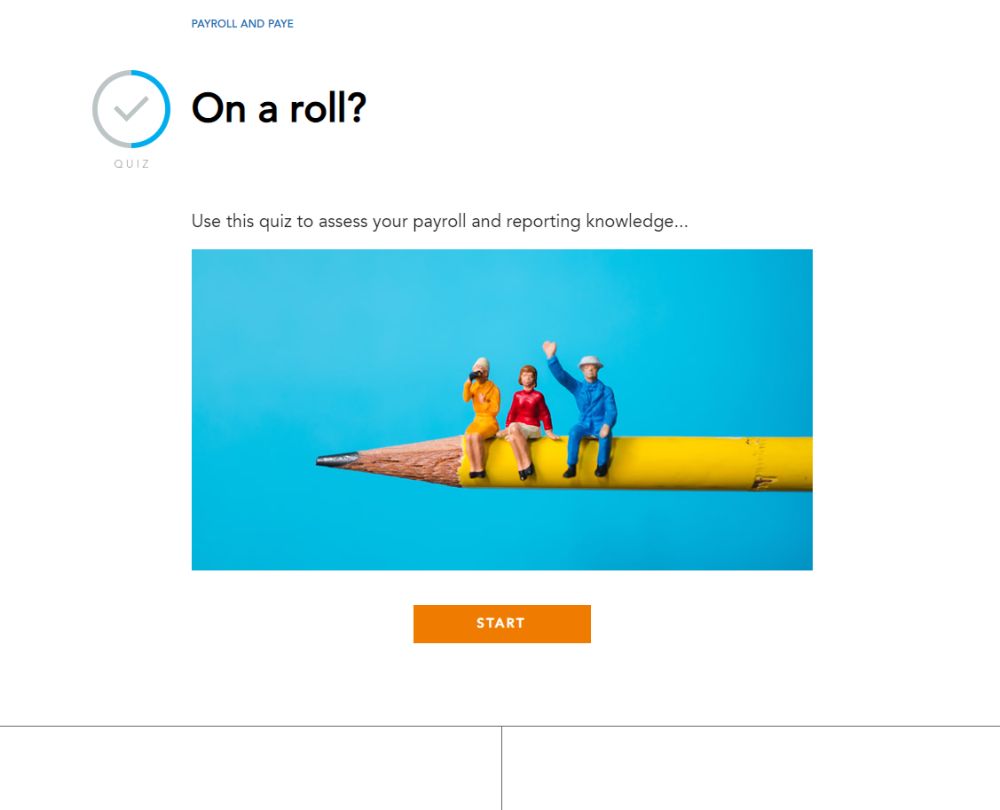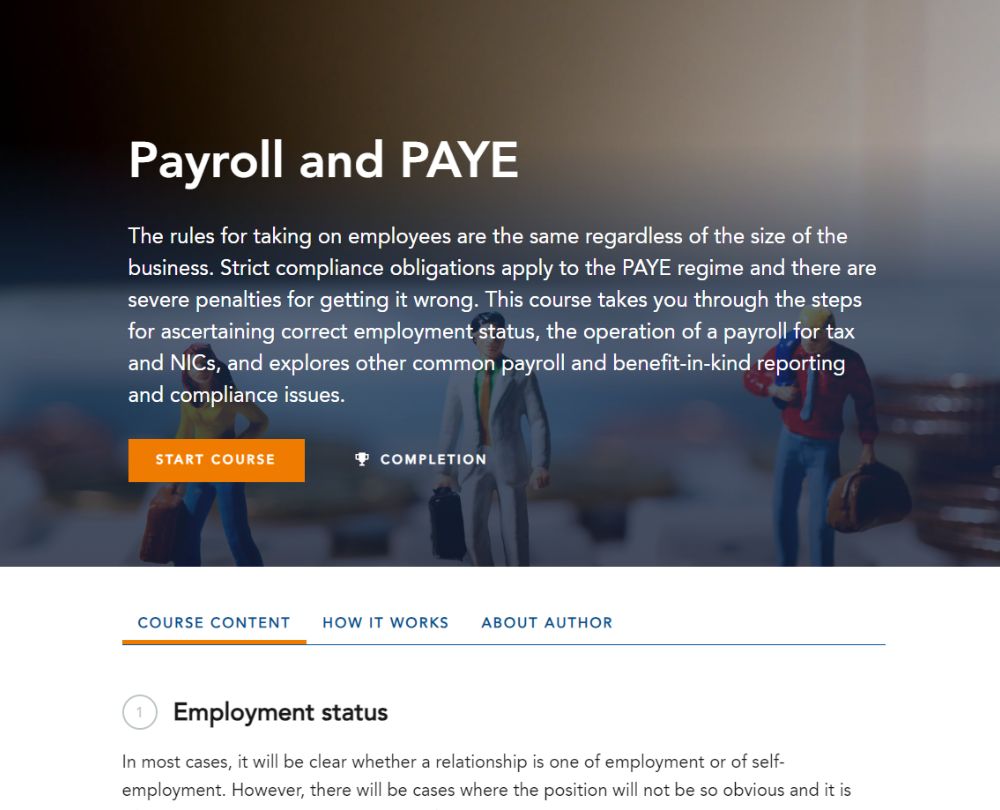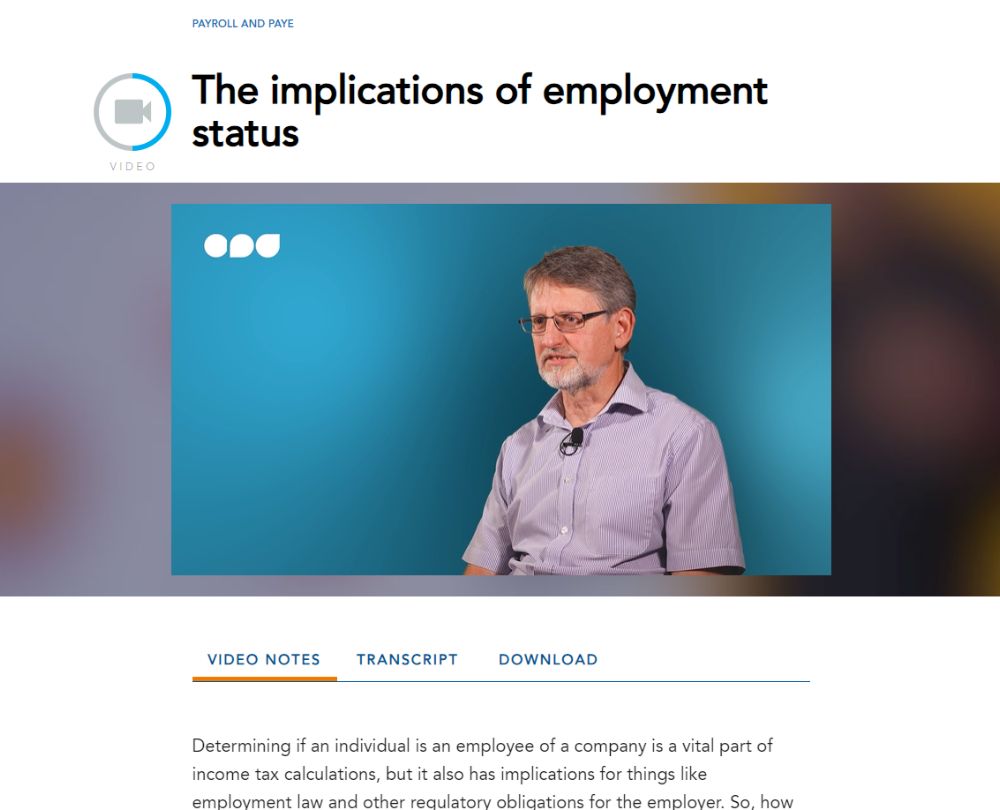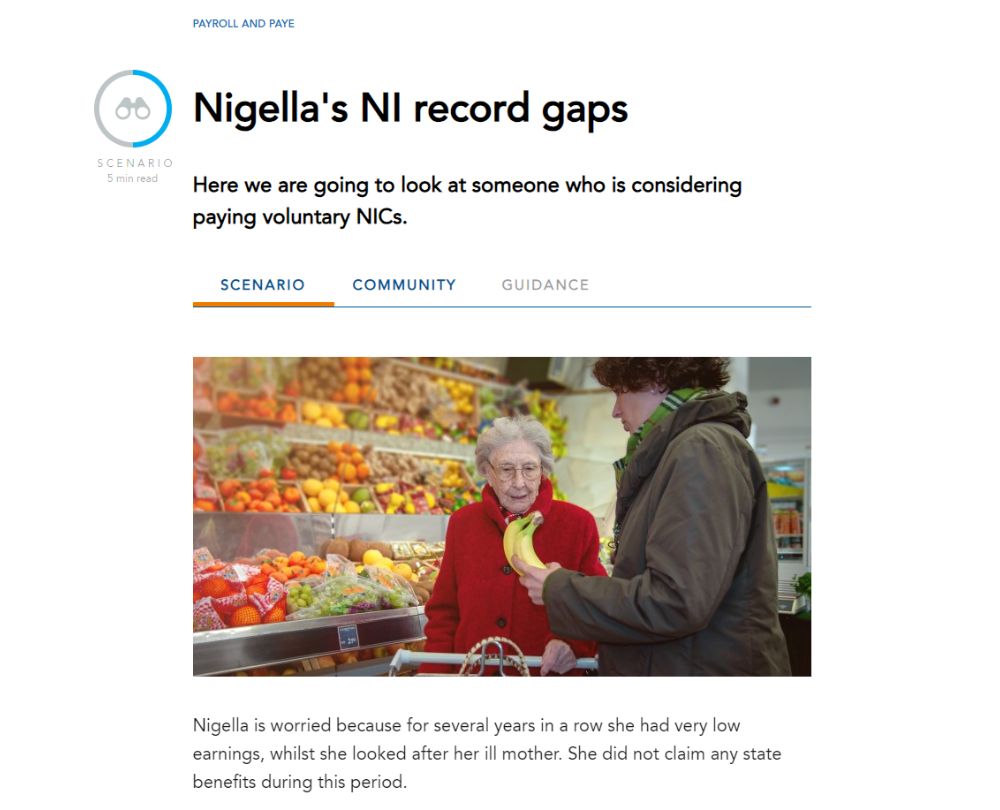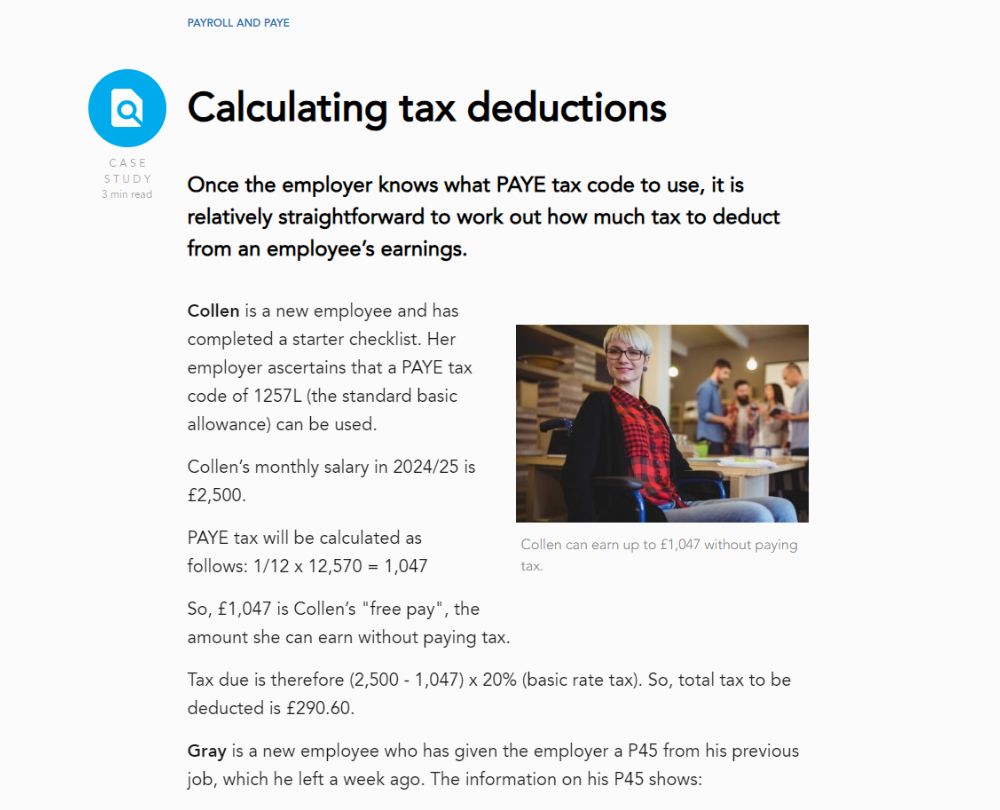Payroll and PAYE
Revised and up to date for 2025/26. The rules for taking on employees are the same for every business. Strict compliance obligations apply to the PAYE regime, and there are severe penalties for getting it wrong. With a focus on IR35 and employment status, this course gives you everything you need to know about employment and payroll taxes.
Use ACPD101 for 10% off any purchase.
This course will enable you to
- Understand all you need to know about employment and payroll taxes
- Get to grips with how to determine employment status and apply IR35 rules correctly
- Be up to date on different classes of NICs and who pays them
- Recognise employer obligations when employing and paying people
- Operate a PAYE system, understand the reporting obligations and penalties for non compliance
- Correctly report employee expenses and benefits
About the course
The rules for taking on employees are the same regardless of the size of the business. Strict compliance obligations apply to the Pay As You Earn (PAYE) regime and there are severe penalties for getting it wrong.
To start with this course guides you through how to determine accurate employment status under IR35. It covers payroll operations related to tax and National Insurance contributions (NICs), considering individual contributions based on employment status, earnings, and gaps in NI records. The course also explores common payroll reporting and compliance issues, including benefit-in-kind reporting.
Enhancing your grasp of employment status and IR35 ensures accurate tax compliance, mitigates substantial risk, and ensures you are giving the right advice to your employer or clients.
Look inside
Contents
- Employment status
- The implications of employment status
- Statutory rules
- Legal framework
- The facts
- Mutuality of obligations
- In business on their own account
- Spotting self-employment
- IR35 rules
- Who do the IR35 rules affect?
- NICs
- National Insurance: An overview
- The basics
- Just another tax?
- 2025 rates and thresholds
- Employment: Class 1 NICs
- Employment: Class 1A and 1B
- Self-employed: Class 2 NICs
- Self-employed: Class 4 NICs
- Voluntary contributions and more
- Voluntary contributions and practicalities
- Claiming employment allowance
- Statutory payments
- PAYE tax
- Employing staff
- Introduction to PAYE
- New starters
- PAYE codes
- NMW and NLW obligations
- Student loan repayments
- Salary sacrifice
- Optional remuneration arrangements
- Payrolling pension contributions
- Payroll reporting
- Real Time Information programme
- Full payment submissions
- PAYE penalties
- Recording expenses and benefits
- Payrolling benefits
- PAYE Settlement Agreements
How it works
Reviews
| Recommended | ||||
Why not upgrade?Find the best way to complete your CPD | CourseNeed just a few unitshourshours? | Pick n MixAll you need for this year's CPD. | LicenceAll you need for this year and more. | TeamKeep your whole team up to date. |
|---|---|---|---|---|
| Access to this course | ||||
| Total CPD unitshourshours | 4 unitshourshours | 21 units20 hours21 hours | 1,500+ unitshourshours | 1,500+ unitshourshours |
| Access period | 120 days | 120 days | 12 months | 12+ months |
| Audit-proof CPD completion certificate | ||||
| Immediate access to our entire CPD catalogue | ||||
| Monthly webinars, 15-minute CPD Bites, video interviews with industry leaders, and more! | ||||
| Account manager on hand to support your team’s needs | ||||
| Learn more | Learn more | Learn more | ||
Why not upgrade?
Find the best way to complete your CPD
You might also like
Take a look at some of our bestselling courses
Use ACPD101 for 10% off any purchase.

